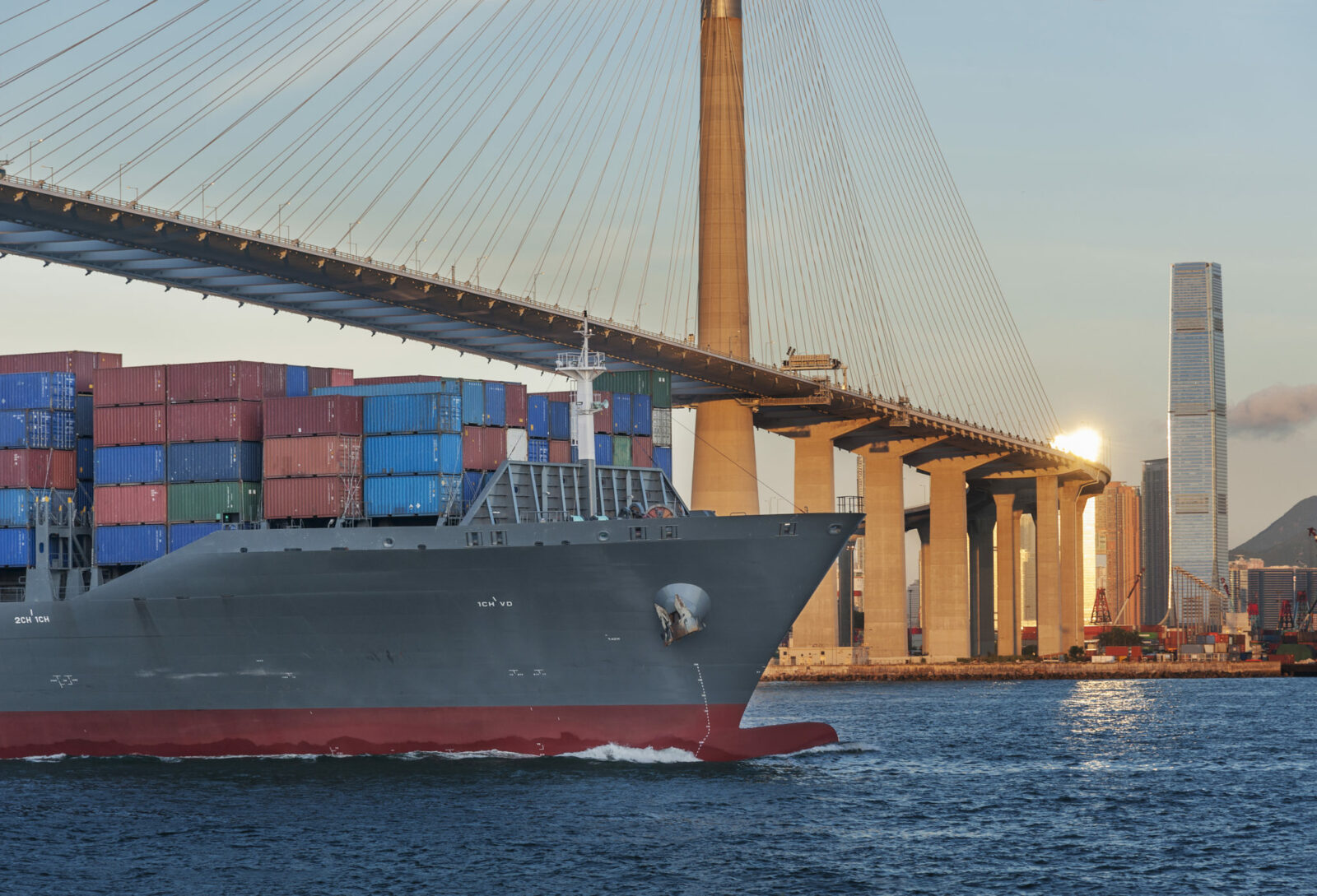Transfer Pricing in the World of Uncertain Tariffs

Co-authored with Madeleine Lang.
The Trump administration has recently imposed several new United States (“US”) tariffs, including both country-specific tariffs and product-specific tariffs. On April 2, a 10 percent baseline global tariff on imports of products from all countries was announced, in addition to higher reciprocal tariffs that are country-specific on imports of products from around 60 US trading partners based on the trade balance the country has with the US. As of April 9, the higher reciprocal tariffs have been paused for 90 days for all countries aside from China, which now faces a 125 percent reciprocal tariff on top of a previously imposed separate tariff of 20 percent. On April 11, the administration announced an exemption of smartphones, computers, and other electronic devices from the 125 percent reciprocal tariff on imports from China and the 10 percent baseline global tariff. Canada and Mexico are exempt from the baseline global tariff and reciprocal tariffs, but a 25 percent tariff has been imposed on imports of goods that are non-compliant with the United States-Mexico-Canada Agreement (“USMCA”). Imports of goods from Mexico and Canada that are USMCA-compliant will continue to be tariff-free. Product-specific tariffs include a 25 percent tariff on all steel and aluminum imports, and a 25 percent tariff on automobiles and automobile parts. Additional product-specific tariffs have been proposed on imports of agricultural products, lumber, copper, semiconductors, and pharmaceuticals, but have not yet taken effect. China, Canada, and the European Union have announced and/or implemented retaliatory tariffs on US exports in response to the new US tariffs, and it is expected that additional countries will follow.
As US trade policy continues to evolve, it becomes essential for multinational enterprise (“MNE”) groups to evaluate how tariffs will impact their profitability and develop strategic methods to mitigate anticipated impacts. This places an increased emphasis on understanding the importance of the relationship between international trade and transfer pricing and how they impact an MNE group’s profitability throughout the supply chain. Companies must understand the interplay between transfer pricing, tariffs, and customs valuation, and how tariffs will impact existing intercompany arrangements involving cross-border transfers of goods.
Overview of Transfer Pricing, Tariffs, and Customs Valuation
Transfer pricing refers to the determination of prices for transfers of goods and services between related parties within an MNE group. Transfer pricing rules and regulations have been developed based on the arm’s length principle, which requires that transactions between related parties be conducted as if they were between unrelated parties under similar circumstances. This principle aims to ensure a fair allocation of profits and taxes among related parties located in different tax jurisdictions. The application of the arm’s length principle typically requires the undertaking of a comparability analysis, whereby transactions between independent entities which are sufficiently comparable to the related party transaction are identified and an arm’s length range or margin is developed based on an appropriate transfer pricing method. Several factors must be considered in performing a comparability analysis, including contractual terms, functional analysis, characteristics of the product or service, economic circumstances, and business strategies. The functional analysis is of particular importance, as the transfer price for a related party transaction should reflect a party’s functions performed, risks borne, and assets employed. For example, a company would expect greater remuneration from the other party in a transaction if it performed more functions, took greater risk, and employed assets in relation to the transaction.
Tariffs are taxes that governments place on goods imported from other countries. Most commonly, tariffs are calculated ad valorum as a percentage of the customs value of the imported good. The customs value of an imported good is calculated based on customs valuation methodologies set out in the World Trade Organization (“WTO”) Agreement on Implementation of Article VII of the General Agreement on Tariffs and Trade 1994 (the “WTO Agreement”). The WTO Agreement establishes the “transaction value” as the primary method for determining customs value. Alternate valuation methods are to be used only when the transaction value cannot be applied. The transaction value is comprised of two main components, with the first component being the price actually paid or payable for goods when sold for export to the country of importation. The second component is a series of cost elements not included in the invoice price that should be added to the price for customs valuation purposes, including selling commissions and brokerage, the value of any “assists”,[1] royalties and license fees the buyer is required to pay directly or indirectly as a condition of the sale of the imported goods, and the value of any part of the proceeds from subsequent resale, disposal, or use of the imported goods that accrues directly or indirectly to the seller. In situations where the buyer and seller of imported goods are related parties, it must be demonstrated that the relationship between the parties did not influence the price of the imported goods. If customs authorities have doubts about the acceptability of the price between related parties, the circumstances surrounding the sale will be further examined to determine whether the price was influenced by the relationship. Once the transaction value of an imported good has been determined and examined, tariffs are imposed as a percent of the imported goods’ transaction value, which are then incorporated into the imported goods cost of goods sold.
Customs valuation and transfer pricing share a common goal in that both aim to ensure that the price of goods in a related party transaction has been set as though the parties were unrelated and under normal business conditions. As such, the transfer prices set for intercompany transactions involving the transfer of goods often serve as the transaction value used as the basis for calculating tariffs and customs duties. In fact, Internal Revenue Code section 1059A prohibits the transfer price paid to its related person by an importer reported for income tax purposes from exceeding the value reported by the importer for customs purposes. However, taxpayers and customs/direct tax authorities may have different incentives in setting and examining transfer prices/customs values. For example, a taxpayer importing goods may desire to declare a low transfer price for a transaction for customs purposes to reduce the tariffs imposed, while for tax purposes, a higher cost of goods sold (transfer price) may be desired to reduce taxable income in the importing country. This prompts increased regulatory scrutiny from both customs and direct tax authorities and emphasizes the need for MNEs to ensure their transfer pricing and customs strategies are in alignment, defendable, and in compliance with the applicable rules and regulations. Transfer pricing documentation prepared by taxpayers as required for tax compliance purposes generally contains information that defends the transfer price/customs value of an imported good in a related party transaction.
What actions should multinational enterprises consider in today’s environment?
In consideration of evolving global trade policy, increased tariffs, and the interplay between transfer pricing, customs valuation, and tariffs, MNE groups should consider taking the actions described below.
Perform Quantitative Assessment
The cost of importing goods into the US from all countries will increase due to new tariffs. MNE groups with significant US operations should perform modelling or a quantitative assessment to assess the impact of increased costs from tariffs on group profitability. Consider where changes can be made across the supply chain to reduce costs and the impact of increased tariffs.
Review Intercompany Agreements
To assess the impact of increased tariffs on entities within an MNE group, it must be determined which of the entities engaged in intercompany distribution transactions should bear the increased cost of tariffs. In general, the importer of record is responsible for paying any tariffs and customs duties. Existing intercompany agreements memorializing intercompany distribution transactions should be reviewed to determine whether the allocation of tariff risks and costs between the relevant parties is addressed. If the allocation of tariff risks and costs is not already addressed, consider amending intercompany agreements to clearly define how tariff risks and costs are allocated between the parties. Any changes to transfer pricing policies dictating the purchase price of goods sold in intercompany distribution transactions should also be reflected in new or updated intercompany agreements. Any changes made should be in alignment with the application of the arm’s length principle and properly reflected in transfer pricing documentation.
Reassess Allocation of Functions, Risks, and Assets
As previously mentioned, the functional analysis is a key component of performing comparability analyses to develop arm’s length pricing in related party transactions. As the functional responsibilities, risks assumed, and assets owned of a party in a related party transaction increase, so should the remuneration it receives. If a US distributor is now bearing increased risk in being the party responsible for paying increased tariffs, the transfer pricing policy and supporting transfer pricing documentation should be updated to reflect this increase in risk.
Evaluate Transfer Pricing Policy / Product Pricing
Generally, transfer pricing methods used to determine the pricing of related-party transactions for the distribution of goods involve evaluating whether the distributor’s profitability aligns with an arm’s length range. This range is established by analyzing the profitability of comparable third-party distributors that perform similar functions, utilize comparable assets, and bear similar risks. As such, the transfer pricing policy in place for intercompany transactions related to the distribution of goods in the US should be tested to evaluate whether the profitability earned by distributors will still fall within current arm’s length ranges of results. Consider whether the transfer pricing policies for such transactions are still appropriate, or if they should be adjusted to reflect increased risk and costs borne by the US distributor in addition to changes in economic conditions in the US market.
Review the components included in intercompany product prices and determine whether any are non-dutiable, such as components related to services or intangible property. Consider excluding these components from the product price, thereby reducing the reported customs valuation amount and allowing for lower tariffs to be imposed.. Any changes made to the product price should be made in consideration of the arm’s length principle and be supported by appropriate transfer pricing analyses and documentation.
Consider whether transfer pricing adjustments will be required for US distributors to earn profit margins in compliance with the arm’s length principle if their actual results during the year are not at arm’s length. Note that if transfer pricing adjustments are required, importers may need to pay additional tariffs if the adjustment increases the customs value of the imported goods. There should also be appropriate support in place demonstrating the need for a transfer pricing adjustment to be made. Participation in the U.S. Customs and Border Protection (“CBP”) Reconciliation Program may be beneficial if retroactive transfer pricing adjustments are anticipated.
Have questions about how the changes could impact your business?
The new US tariffs have the potential to materially impact the profitability of MNE groups with significant imports into the US for distribution to customers. The international tax team at Baker Newman Noyes has the transfer pricing experience to help you analyze the impact of increased tariffs on group profitability. We can also evaluate existing transfer pricing policies and assist with developing and implementing strategies to ensure you are operating in the most tax efficient manner while maintaining compliance with applicable tax and transfer pricing regulations.
[1] “Assists” are defined as certain goods and services supplied by the buyer free or charge or at reduced cost for use in connection with the production and sale for export of the imported goods. This includes materials, components, and parts incorporated in the imported goods, tools, dies, molds, etc., used in the production of the imported goods, materials consumed in the production of the imported goods, and engineering, development, artwork, etc., undertaken elsewhere in the country of importation and necessary for the production of the imported goods.
Disclaimer of Liability: This publication is intended to provide general information to our clients and friends. It does not constitute accounting, tax, investment, or legal advice; nor is it intended to convey a thorough treatment of the subject matter.


